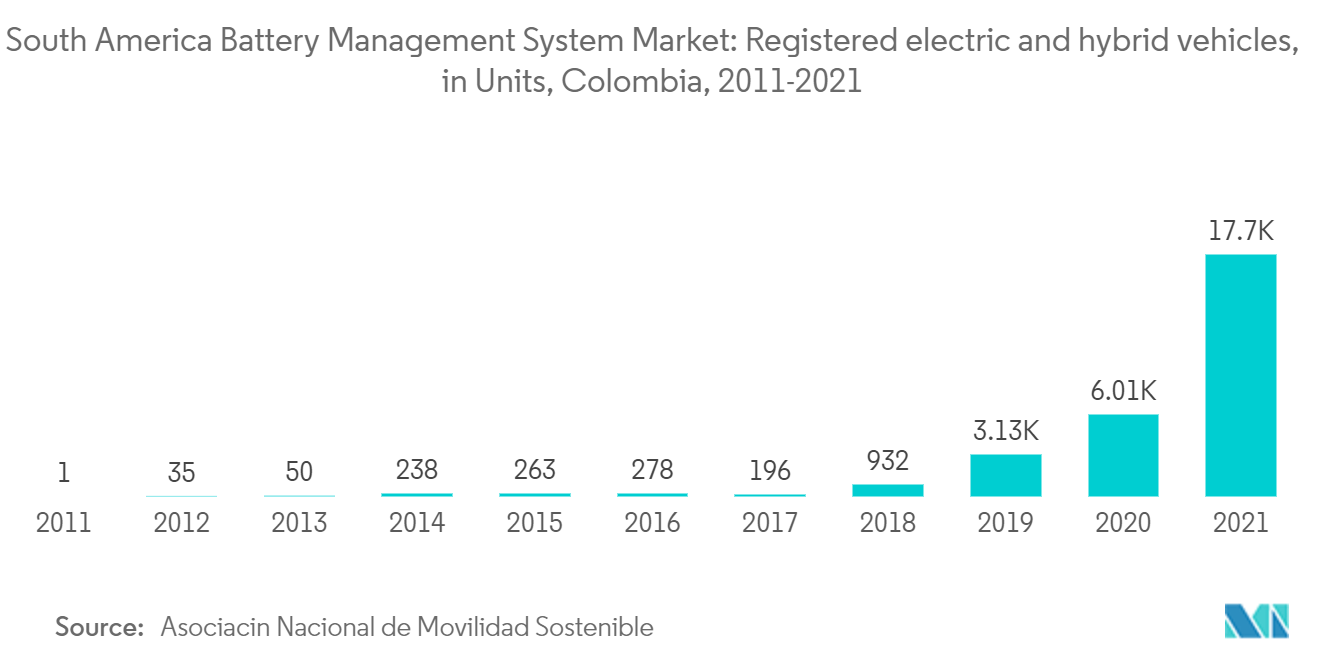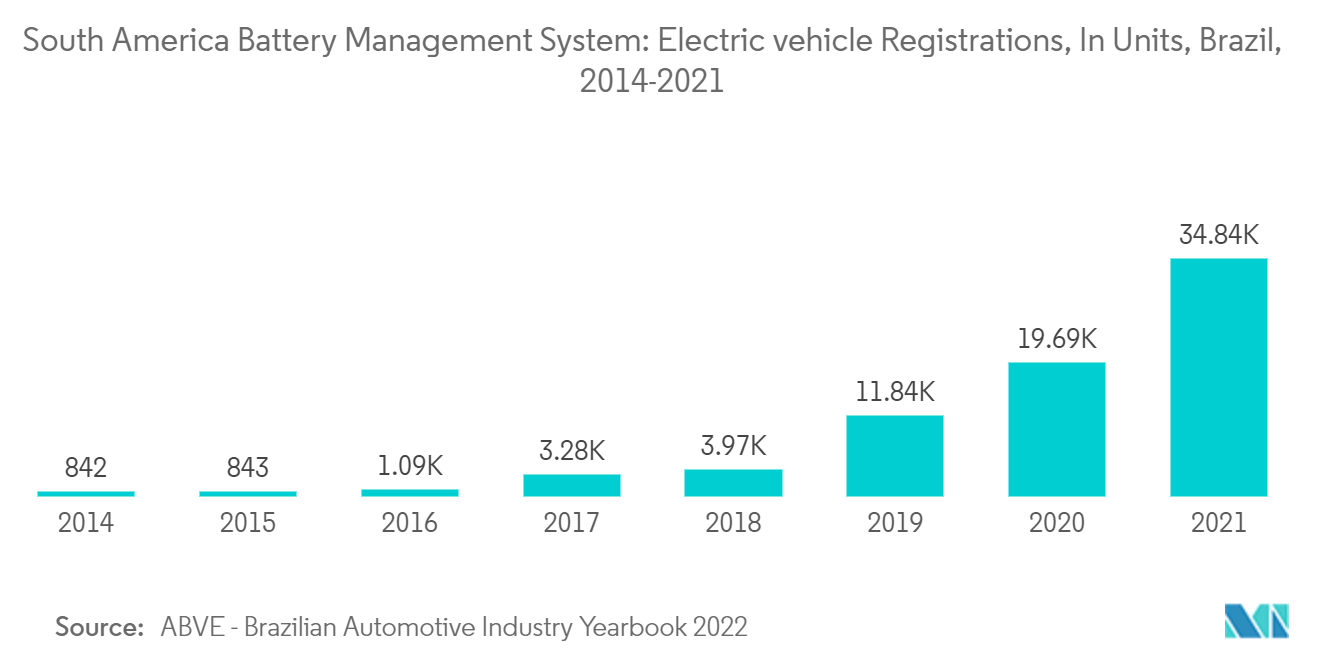Market Trends of South America Battery Management System Industry
This section covers the major market trends shaping the South America Battery Management System Market according to our research experts:
Transportation Segment is Expected to Dominate the Market
- Vehicles with internal combustion engines (ICE) were the only types used earlier. However, technology has been shifting toward electric vehicles (EVs) due to growing environmental concerns. Battery management systems do not have any market in the ICE sector.
- Lithium-ion batteries are primarily used in EVs as they provide high energy density, low self-discharge, less weight, and low maintenance. For ICE vehicles, the lead-based battery is widely used and is expected to continue to be the only viable mass-market battery system for the foreseeable future. Lithium-ion batteries still require higher cost reductions for use in SLI applications to be considered a viable mass-market alternative to lead-based batteries.
- Lithium-ion battery systems propel plug-in hybrid and electric vehicles. Owing to their high energy density, fast recharge capability, and high discharge power, lithium-ion batteries are the only available technology capable of meeting OEM requirements for the vehicle's driving range and charging time. The lead-based traction batteries are not competitive for use in total hybrid electric vehicles or electric vehicles because of their lower specific energy and higher weight.
- In Latin America, 118,145 hybrid and electric vehicles were registered in 2021, an increase of 107.1% over 2020, when 57,078 units were registered. The fastest-growing segment was hybrid vehicles, including plug-in hybrids (PHEV) and non-plug-in hybrids (HEV), with 110.1% growth, while fully electric vehicles (BEV) grew by 57.3%.
- According to the National Association of Sustainable Mobility (ANDEMOS), in 2021, 17,702 electric cars and hybrid vehicles were registered in Colombia. The Colombian government has also set a target of getting 600,000 EVs on the road by 2030, which is expected to lead to an increase in the demand for batteries in the country and, in turn, increase the demand for battery management systems (BMS).
- The battery management systems are deployed in various electric vehicles, two-wheelers, passenger vehicles, light commercial vehicles, and heavy commercial vehicles. The transportation industry is known for its greenhouse gas and carbon emissions. Furthermore, the net environmental impact of burning fossil fuels has historically been the weak spot for manufacturers of motor vehicles. Moreover, governments implemented stringent regulations to reduce the pollution caused by internal combustion engines. As a result, several large automotive manufacturers focus on moving toward electric vehicle development and manufacturing.
- Hence, based on the factors mentioned above, the transportation segment is likely to dominate the battery management system market during the forecast period.

Brazil is Expected to Dominate the Market
- Brazil is the world's twelfth-largest economy, with a size of about USD 1.62 trillion in 2021, and is the largest economy in South America.
- The economic development in Brazil is leading to the widespread development of commercial infrastructure. As the country's economic activity is booming, it is witnessing a considerable increase in the growth of data centers, which is expected to create opportunities for battery management systems. The electricity supply at data centers is of paramount importance to ensure continuous operations, which leads to the deployment of battery management systems at data center sites.
- For instance, in December 2021, Ascenty opened two new data centers in Rio de Janeiro and Hortolândia, Brazil. The company recently raised USD 925 million in credit and announced its plans to build five more data centers in the country. Two of the five data centers are expected to be completed in 2022, two in 2023, and one in 2024. Thus, such upcoming data centers are likely to increase the market studied during the forecast period.
- Furthermore, the increase in sales of electric vehicles has also helped in the increasing demand for lithium-ion batteries. With the sales expected to increase at a much faster rate during the forecast period, the demand for batteries, specifically lithium-ion batteries, is expected to increase.
- According to the Brazilian Association of Electric Vehicles (ABVE), EV registrations in Brazil reached 34,839 in 2021, a 77% increase year over year.
- The Rota 2030 program is aimed at improving energy efficiency in the transportation sector, which is a big boost for the Brazilian electric vehicle market. The surge in the deployment of electric vehicles is likely to provide a significant impetus to the Brazilian segment of the market studied during the forecast period.

